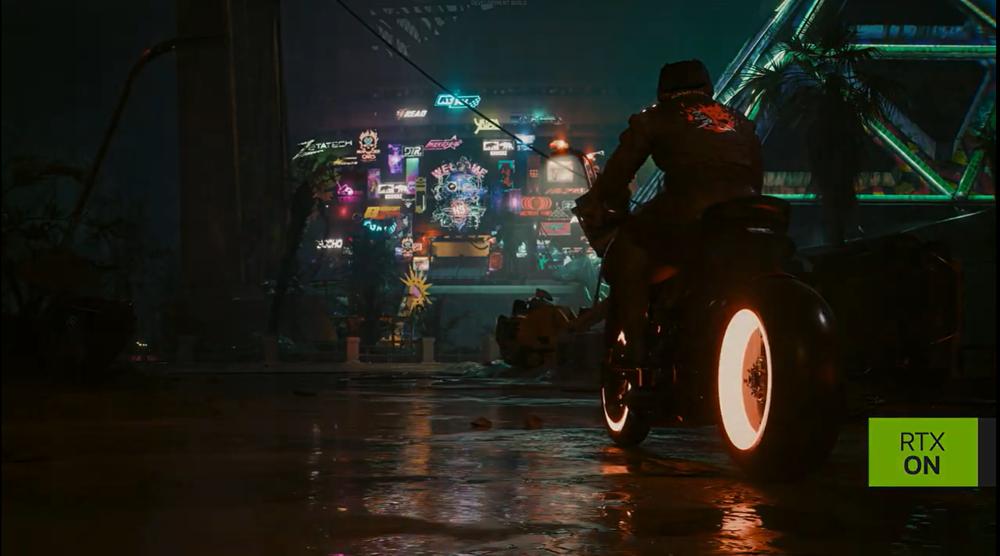It’s no secret that PC gaming is constantly evolving, with more developers focusing on it as their platform of choice and technological advancements allowing them to make games that look and run at a level that would have been unthinkable 10 years ago.
With that in mind, IGN sat down with NVIDIA and CD Projekt Red to chat about the current state of PC gaming, the games that best showcase the latest tech advancements, and the challenges and opportunities that could help define the future of PC gaming.
NVIDIA introduced a host of advancements earlier this year, starting with the launch of DLSS 4 alongside its GeForce RTX 50-Series hardware, which uses AI-powered rendering to enhance visuals and improve performance. It offers improved image quality, overcomes anti-aliasing limitations, and its Ray Reconstruction uses AI to reduce ray-traced noise.
It also adds improved Frame Generation and Multi-Frame Generation, which enable performance and graphics features that weren’t possible previously. They overcome CPU bottlenecks, allowing path tracing at over 200+ FPS.
“Frame Generation uses AI to generate an entire frame based on data from the game itself,” GeForce Evangelist Jacob Freeman said. “We introduced that with DLSS 3, and it generated one additional frame. For DLSS 4, it’s generating three additional frames. So you’re getting much smoother gameplay, much higher performance.”
Lighting might be the area of game development that has seen the biggest improvement in recent years, first with the proliferation of Ray Tracing. DLSS 4 allows developers to utilize Path Tracing, which can be used to create photorealistic 3D environments with dynamic light and shadow, reflections, and refractions.
“[Path Tracing] is not necessarily a new technology. I mean, it’s been used in CG for a long time,” Freeman said. “But until recently, it was basically unachievable for real-time graphics. It’s just too computationally intensive. Basically, DLSS helped us to deliver path-traced visuals at a full 60 FPS.”
Path Tracing enhances lighting across the board, taking the quality of ray-traced lighting to the next level, reflecting additional detail and game elements on surfaces. It provides more realistic illumination, and light bounces off multiple surfaces, creating more detailed and varied environments. One of the benchmark implementations of Path Tracing came in the Phantom Liberty expansion for Cyberpunk 2077.
“I do need to say with great pride that we were one of the frontrunners when it comes to Path Tracing, and we worked with NVIDIA for years,” said Jakub Knapik, VP/Global Art Director for CD Projekt Red. “We started with Ray Tracing in our base game. The decision to release Path Tracing was actually triggered by the fact that DLSS was capable of what it was capable of. And while we released Phantom Liberty, it was more or less the same time where DLSS evolved.”
CD Projekt Red has continued working closely with NVIDIA to implement more improvements, with Cyberpunk 2077 adding DLSS 4 support with Multi-Frame Generation in January. It works in concert with DLSS Super Resolution and DLSS Ray Reconstruction to multiply performance on GeForce RTX 50 Series GPUs by 9.2x on average at 4K with the fully ray-traced RT Overdrive Mode enabled and all settings maxed out.
“With all those features [of DLSS 4], we were able to have, for example, Path Tracing running in Cyberpunk Phantom Liberty in 4K,” Knapik said. “When you just process that, the one frame with Path Tracing in a film 10 years ago required 24 hours to render. One frame. Now we are rendering 240 frames in 4K to play the game. Obviously we’re using a lot of tricks, but when you just flip in your head the math … this is a breakthrough.”
While Cyberpunk 2077 is an excellent example of the tech’s implementation, there are plenty of other standout games that showcase what’s possible with DLSS 4 and Path Tracing.
Doom: The Dark Ages had its frame rates multiplied on GeForce RTX 50 Series GPUs by an average of 4x at 4K using DLSS 4 with Multi-Frame Generation. Its performance doubled on GeForce RTX 40 Series GPUs using DLSS Frame Generation, and image quality and frame rates were enhanced on all GeForce RTX GPUs using DLSS Super Resolution’s transformer AI Model. Path Tracing also enhances light sources, such as lamps, torches, and the Doom Slayer’s weapons. These emissive elements now more realistically illuminate surrounding detail, and dynamically illuminate corridors as light from emissives hits shiny, specular surfaces.
Indiana Jones and the Great Circle is also enhanced with DLSS Super Resolution, Ray Reconstruction, and Path Tracing. Using DLSS 4 with Multi-Frame Generation, it can reach previously unobtainable frame rates on RTX 50 Series graphics cards. With Path Tracing, shadows, reflections, and global illumination are all accurately rendered, elevating image quality.
Remedy Entertainment’s FBC: Firebreak features the full suite of RTX technology that was developed for Alan Wake 2 (also from Remedy). FBC: Firebreak is a three-player co-op FPS, showing that DLSS improvements can be implemented in a wide range of genres. Lighting reflections, shadows, and ambient occlusion are all enhanced with Path Tracing. This improves fidelity throughout the Federal Bureau of Control’s unpredictable and extradimensional headquarters, including transparent and opaque reflections accurately mirroring their surroundings at full resolution, heightening immersion.
And the upcoming action RPG Phantom Blade Zero from developer S-GAME has committed to launching with day-one support for DLSS 4 with Multi-Frame Generation, along with Ray Tracing.
Speaking of future titles, Freeman and Knapik discussed where the industry is heading and what challenges are next to be tackled. They both mentioned hair being an area of focus, particularly in how it reacts to light and making it look and behave more realistically.
“There’s also more advanced ray tracing that can still be done. For example, we recently talked about a new feature called RTX Hair, which is a more accurate way to represent how light interacts with hair,” Freeman said. “With RTX Hair, it’s using a new feature on RTX 50 series that is called linear swept spheres and it’s a different way to actually render the hair strands. It’s a more efficient way to render the hair strands, which can interact better with path-traced lighting. What it will allow you to do is just have more realistic-looking hair when you light it with Path Tracing.”
Freeman also mentioned neural rendering being the wave of the future. That started earlier this year with the release of NVIDIA RTX Kit, which is a suite of neural rendering technologies to use AI for ray tracing, render scenes with immense geometry, and create more lifelike characters. It enhances geometry, textures, materials, and lighting, providing greater visual fidelity and performance for complex open worlds while reducing artifacts, instability, and VRAM usage.
While next-generation technologies like DLSS and Path Tracing are becoming more standard in games, the experts at NVIDIA and developers at CD Projekt Red and other leading studios are constantly pushing to find new ways to leverage technologies to improve graphics and performance, giving PC gamers the best experience possible.
“There’s certainly a lot more that can be done with lighting, with Path Tracing, with Ray Tracing, that we still have to explore,” Freeman said. “There’s always places to go.”

 Segnali di vita su Marte? Il rover NASA trova tracce che fanno discutere
Segnali di vita su Marte? Il rover NASA trova tracce che fanno discutere